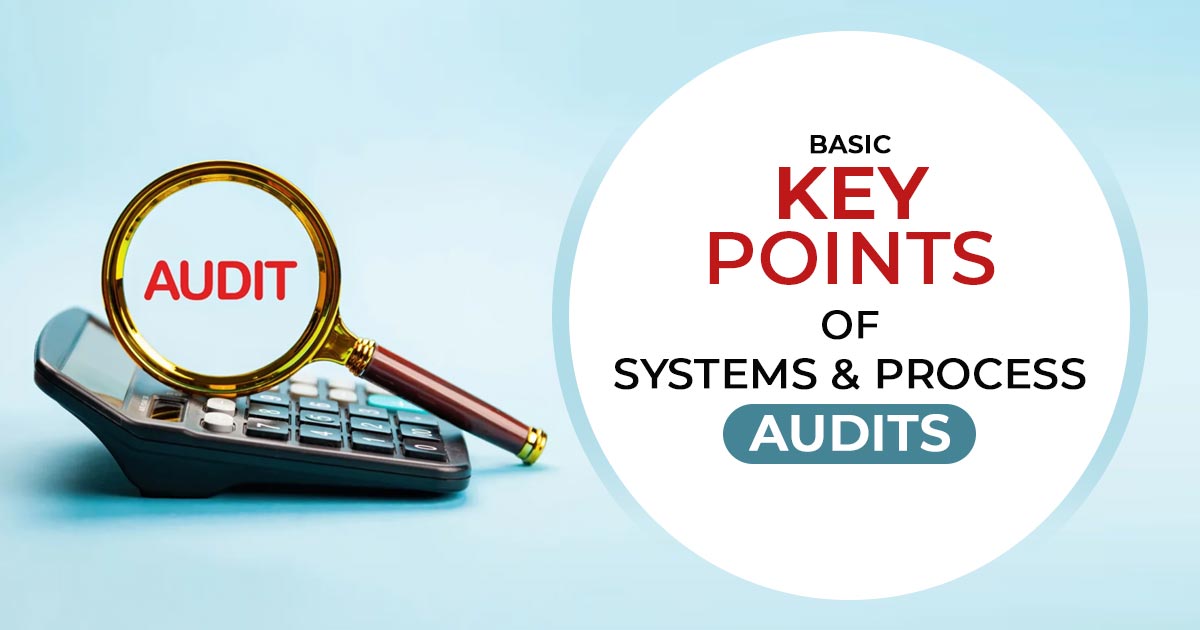
In organizational management, audits act as an indispensable tool to increase efficiency, ensure compliance, and drive overall effectiveness. The audit type comprises mainly systems audit and process audit. Each furnishes distinct objectives, and understanding their comparative nuances is important for companies who are asking to optimize their performance and reduce their risks.
Quick to Understand the Process Audit
A process audit focuses on specific processes within an organization to assess their efficiency, effectiveness, and commitment to predefined criteria or standards. Key components scrutinized in a process audit include:
- Performance Metrics: Examine the key performance indicators (KPIs) and additional metrics to measure the process performance and specify areas requiring improvement.
- Tax Compliance: Validating the compliance procedure with the pertinent statutes, norms, industry standards, and internal policies.
- Document Procedure: Review documented procedures, workflows, and instructions to ensure clarity, consistency, and compliance with effective measures.
- Examining the cause: To execute the corrective measures examining the causes of inefficiencies, errors, or deviations from anticipated consequences.
- Use of Resource: To find out the optimization for wished outcomes, evaluating the allocation of resources like manpower, materials, and equipment.
Read Also: A Full List of Documents Required for Income Tax Audit
What is a Systems Audit for an Organization?
A systems audit comprises an extensive evaluation of an organization’s complete system of controls, processes, and procedures. Its goal is to measure the sufficiency and effectiveness of the overarching systems in place to realize organizational goals. A systems audit contains:
- Policies and Methods: Analysing the relevance and sufficiency of policies and procedures controlling different operational domains like finance, human resources, IT, and risk management.
- Internal Controls: Assessing the effectiveness of internal controls made to safeguard assets, prevent fraud, and ensure compliance with regulations and industry standards.
- Governance Formation: To ensure transparency and accountability, scrutinizing the organizational hierarchies, roles, responsibilities, and decision-making processes.
- Risk Handling: To identify, assess, and mitigate risks in different business functions, analyzing the organization’s strategy.
- Systems Information: Examining the design and functionality of information systems, including aspects such as data integrity, security measures, and accessibility.
Benefits of Integrating Systems and Process Audits
Systems audit and process audit concentrate on distinct facets of organizational management, they are not mutually exclusive and are complementary. Merging such audits proposes distinct benefits-
- Comprehensive View: The merging permits the companies to amalgamate the infrastructure-focused approach of the systems audit with the functionality granularity furnished via process audit, streamlining a complete understanding of strengths, weaknesses, and improvement areas.
- Continuous Improvement: Organizations can execute targeted interventions to conduct continuous improvement in the organizational scope, by determining systemic problems via system audits and particular inefficiencies through process audits.
- Alignment: Merging the audits furnishes the assurance of alignment of the individual processes with overarching objectives of the organization, strategies, and values drawn in the systems and policies.
- Risk Management: Merged audits encourage risk management efforts by proposing the information into systemic risks inherent in organizational structure and processes and operational risks related to specific activities.
Closure: Through integration enhancing organizational effectiveness Systems audit and process audit serve multiple purposes but are integral parts of organizational management. Systems audit assessees overarching infrastructure and controls, and process audit delves into the operational intricacies of individual workflows.
Merging such audits equips organizations with a complete understanding of their procedures, streamlining the identification of areas for advancement and conducting continuous enhancement for the goal of the organization. The organizations can enhance efficiency, mitigate risks, and foster enduring success by leveraging insights from both audit types.